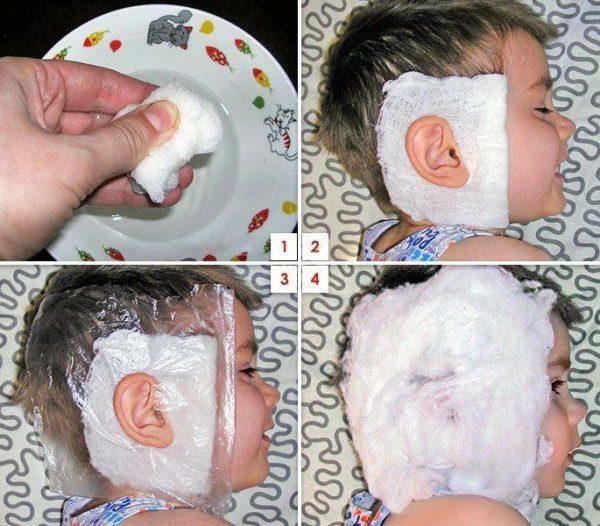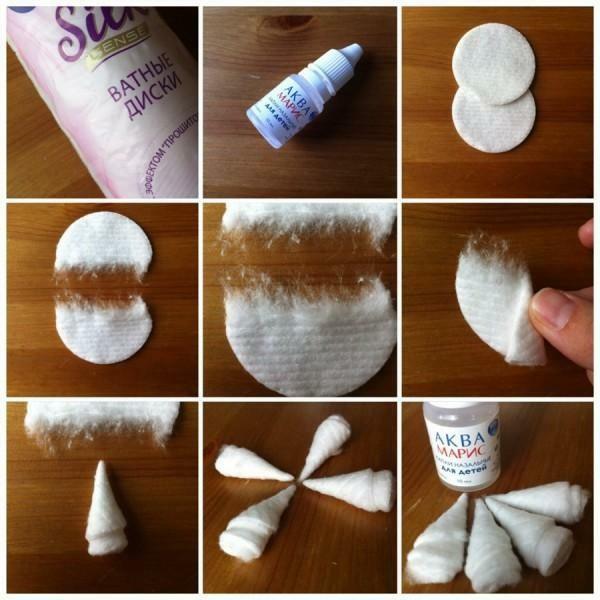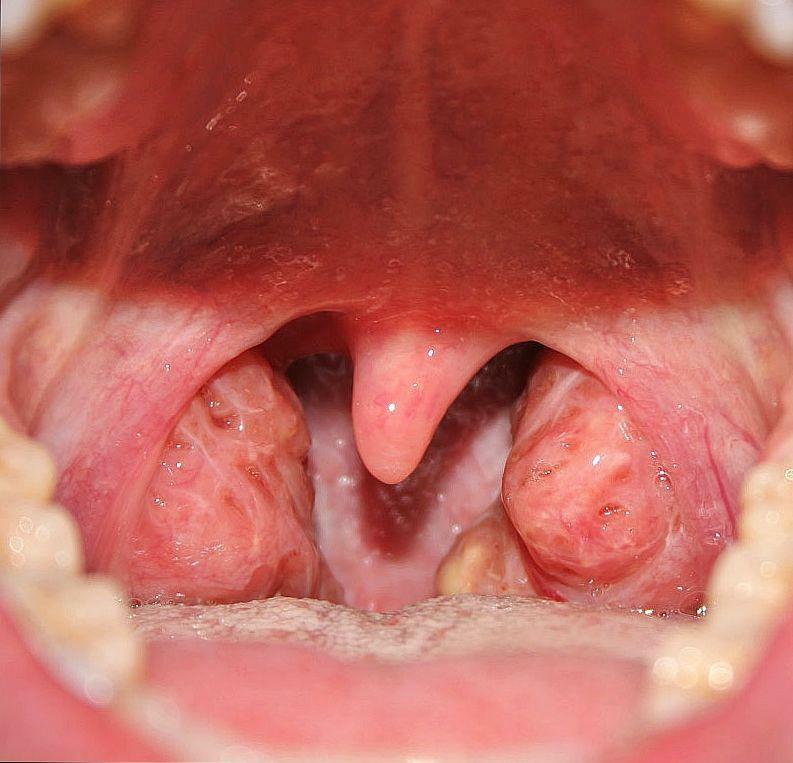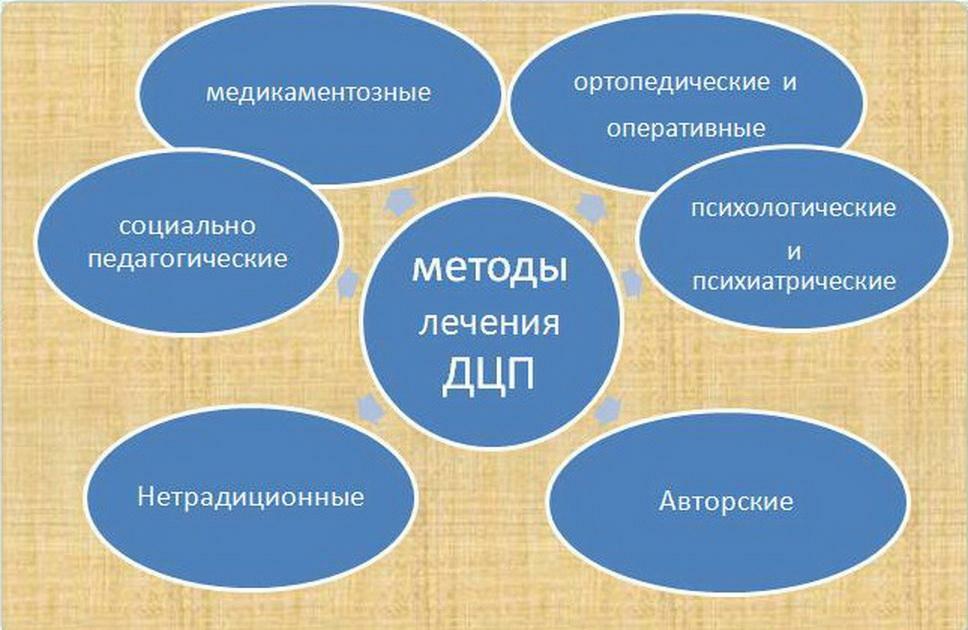The presence of the virus makes the human body vulnerable, contributes to the activation of viruses, reducing immunity. The first in such cases are hit by ENT organs. Bullous otitis media( hereinafter BO) is an acute ear inflammation that develops against the background of a viral infection( acute respiratory viral infection, influenza, herpes, mumps, measles, rubella, etc.), mainly at the stage of recovery. Almost never appears as a primary disease.

Bullous otitis media: causes, symptoms, treatment and prevention methods
Content of material
- 1 Types of bullous otitis
- 2 How does infection occur
- 3 Symptomatic
- 3.1 Video - Bullary otitis
- 4 Diagnostic methods
- 5 Treatment methods
- 5.1 Video - Otitis
- 6 Possible consequences and complications
- 7 Prevention methods
Types of bullous otitis
The inflammatory process can concentrate in the area of the outer, middle or outer ear - the most complex in structure and lifeOn the most important department, whose function is to transmit sound signals the human brain. The disease can spread directly to all parts of the auditory organ( diffuse or diffuse otitis) or both ears( bilateral otitis media, is severe enough and can have consequences in the form of various complications, and therefore requires mandatory hospitalization).
classification table
Of the total number of otitis cases, the bullous form of viral origin is rare( in six percent of cases).Specific manifestation of the disease - formation on the walls of the ear canal bloody blisters - so-called. Bull. They complicate the course of otitis and, if untimely, can lead to other health problems. 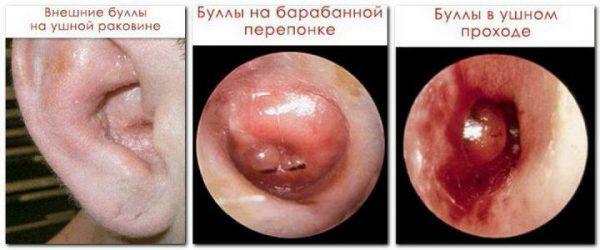 Bulls How the infection occursMoving around the circulatory system, aggressive viruses attack the hearing organs through the Eustachian tube that connects the middle ear and the nasopharynx. At a later stage, a bacterial infection often accompanies a viral infection. Please note! In children under the age of 3 years, the disease progresses rapidly, because their auditory tube is much shorter and wider than in adults. The risk factors provoking this pathology include:
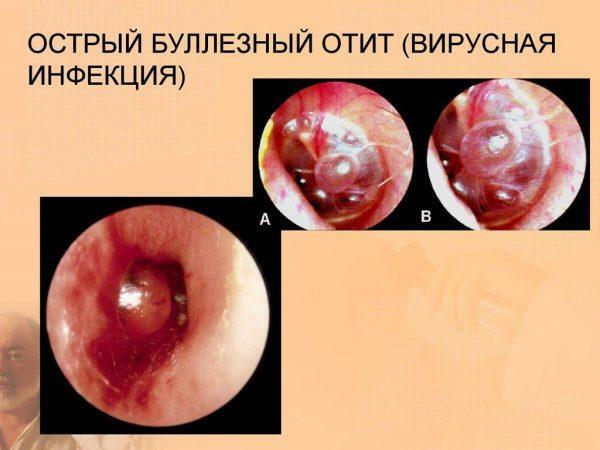 Acute bullous otitis Outbreaks of BD morbidity are often recorded during epidemics of influenza, which is why the disease received another name - influenza otitis media. A high level of disease causing infection can cause otophoresis in the chronic form. In this case, the primary symptoms are added to the symptoms of a purulent process. Unqualified treatment of BW can trigger an even greater activation of pathogens and, as a consequence, their ability to withstand antibacterial drugs. Symptoms ofIt is quite difficult to recognize this type of otitis alone, because its signs almost do not differ from those that arise in catarrhal inflammation or usual acute otitis. 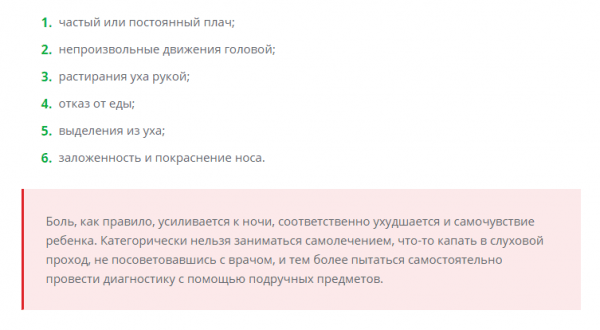 Symptoms of bullous otitis in children before the year The list of the main symptoms is as follows:
Note! Symptoms of otitis virus origin in children are usually more pronounced. They have this disease is always accompanied by a decline in strength and general intoxication, which can not be said about adults. Regardless of the age of the patient at the first sign of BO, it is necessary to consult an otolaryngologist. Video - Bull otitisDiagnostic methodsThe initial examination of a laryngologist includes the collection of anamnesis and examination using a microscope and / or an otoscope. This allows a qualified specialist to detect visual signs of BW: bullae, edema, tympanic deformation, characteristic discharge. The type of infection that provoked the disease is determined by a general analysis of blood and a tank-sowing. This information helps to choose the right way of treatment. In case of suspicion of the spread of the inflammatory process to the brain or skull, instrumental examination is prescribed. Magnetic resonance imaging, which allows to see the localization and accurately determine the causes of pathology, is much preferable to traditional radiography in the diagnosis of BW.Some limitations in the application of this procedure are due mainly to its high cost. 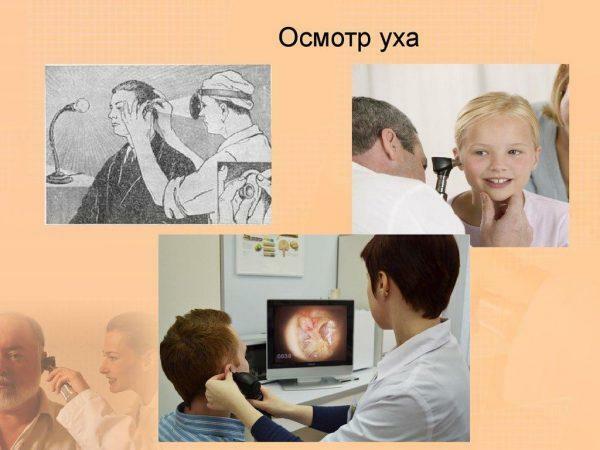 Ear examination with otitis With hearing loss, threshold and speech audiometry is prescribed - special tests using headphones. The method of advanced diagnosis, which determines not only the severity of the hearing, but also the state of the tympanic membrane and the functionality of the middle ear, is called tympanometry. During this procedure, the patient is injected into the ear cavity of the probe and through it the sounds of different loudness and tonality are broadcast. Treatment Methods
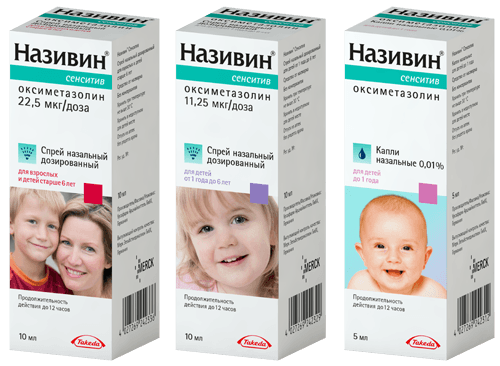 Drug line Nazivin To heal the pain syndrome and activate the healing process, it can also be heated with salt, a blue lamp or a reflector. Note! Alcohol compresses are not recommended for use at high temperatures. The categorical contraindication to warming up is the presence of a purulent process, relative - increased ear moisture, damage to the tympanic membrane. Timely diagnosis and treatment allows you to get rid of BF even at the catarrhal stage, without transition to exudative. A decisive role in the success of therapy is played by the general state of immunity and the entire organism of the patient as a whole. The self-medication of viral otitis is dangerous and categorically unacceptable. Including because some drops on the basis of oils, in contact with a damaged eardrum, can adversely affect the auditory nerve and provoke irreversible hearing impairment. Do not forget about the side effects of the drugs used. So, boric alcohol and levomitsetin can cause vomiting, diarrhea and even convulsions( especially in children).The whole process of treatment should be carried out in accordance with the doctor's appointments and under his close supervision. Video - OtitisPossible consequences and complications ofIt is worth once to let the disease run its course, and after a while it can come back again. When it grows into a chronic form, BW causes a gradual decrease in hearing, until it is completely lost, and then surgery can not be avoided. But even such a radical measure does not always lead to a positive result. 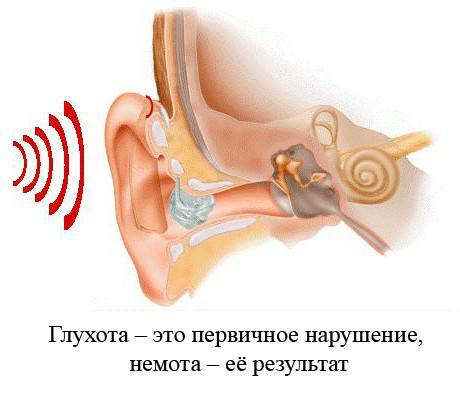 Deafness is a consequence of otitis Viral otitis, developed against scarlet fever and measles, with inadequate treatment or its absence can be accompanied by necrosis( death of tissues), destruction of auditory ossicles, labyrinth and other important structures. Such consequences cause deaf mute. Other serious complications of this pathology may be paralysis of nerves and violation of face symmetry. Otitis of the inner ear often causes dizziness, migraine, movement coordination disorder, in some cases - meningitis and even brain abscess, otitis of the external ear increases the risk of mumps( parotid inflammation) and swelling of the face. Speaking about BW, it is impossible not to remember bullous myringitis - a disease with similar symptoms, which is fraught with such complications as sensorimotor deafness. This pathology differs in the localization of bullae in the region of the tympanic membrane, which causes the strongest pain syndrome. In the course of diagnosis, the doctor should first and foremost eliminate the risk of developing this serious ailment. Methods of preventionThe main means of preventing BW is the complex strengthening of immunity. Its prevention consists in a mobile way of life, a proper diet. In winter and spring it is important to take vitamins, avoid hypothermia, during seasonal epidemics, try to visit less crowded places, wear gauze bandages, and carry out the prevention of viral infections according to medical recommendations. |
|---|


